This Kansas State research program is helping HBCU students become agricultural scholars
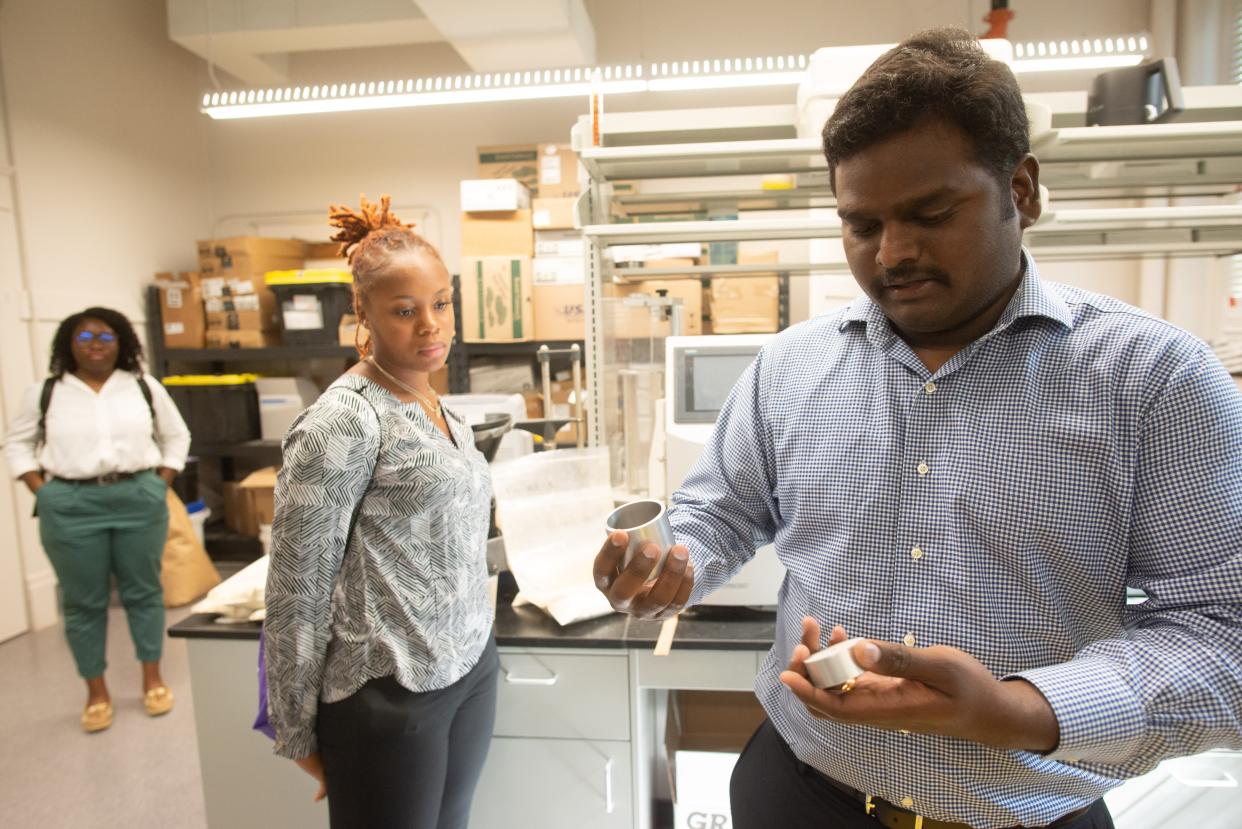
MANHATTAN — Before this summer, Kayla Adams couldn't have told you much about grain.
In fact, agriculture — at least in terms of farms, fields and grains — was pretty far from her mind, as an undergraduate student at Central State University in Ohio, hoping to become a veterinarian one day.
But now she's almost an expert on Kernza, a new kind of perennial grain with a lot of promise, and could probably tell you more about the crop than most farmers around the state.
A summer research program is bringing in promising students, like Adams, from Historically Black Colleges and Universities around the U.S. to Kansas. Many of them are finding career possibilities in a pathway they never would have before thought possible.
"It’s about giving all students the ability to navigate through the College of Agriculture, graduate, be productive members of society either in the workforce back on the farm or in research with people who are different," said Zelia Wiley, assistant dean for diversity in the K-State College of Agriculture and the university's Research and Extension branch.
More: Kansas State Board of Education will see three primary races, all between Republicans
Kansas has no HBCUs, but fellowship partnership brings in Black scholars
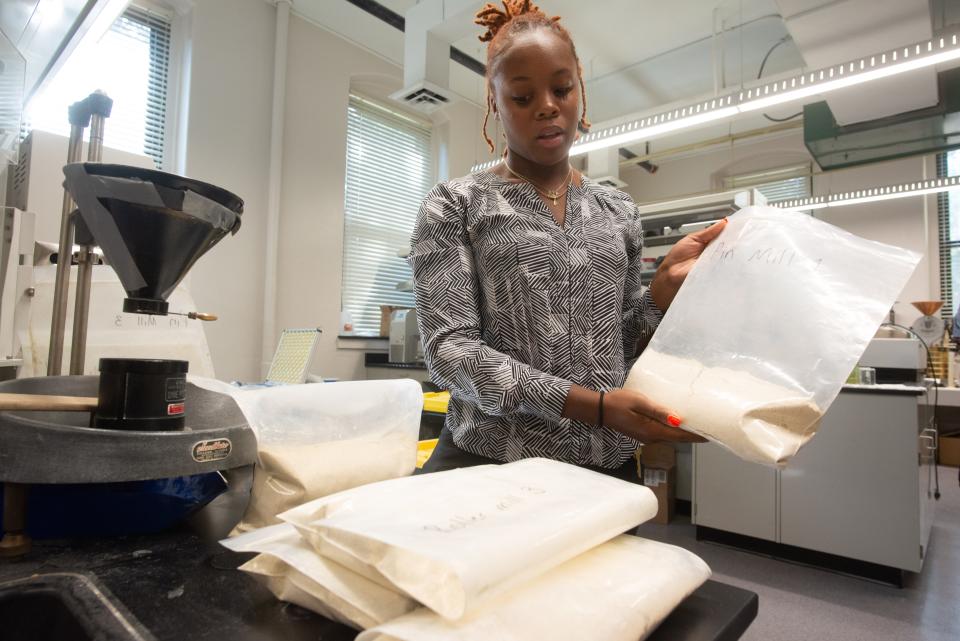
K-State touts its status as the first land-grant university under the Morrill Act of 1862, which gave revenues from the sale of federal lands to U.S. states to establish universities dedicated to the teaching and research of agriculture and mechanical sciences.
Less known outside of the South, however, is the 1890 revision of the Morrill Act, which allowed many states south of the Mason-Dixon line the ability to establish additional land grant universities for Black students, who were still segregated from attending the original land-grants in those states.
Nineteen of those schools, designated 1890 Institutions, exist today throughout the South, many of them also designated as Historically Black Colleges and Universities.
So when Wiley, herself a graduate of an HBCU, started her position as assistant dean for diversity at K-State's College of Agriculture in 2003, she saw an opportunity to help change the narrative for what had then been the university's least diverse college. As part of her team's efforts, the College of Agriculture was able to triple its enrollment of underrepresented, minority students.
But there was still a gap, especially at the graduate level. Most graduate-level minority students have been international students from overseas, and many underrepresented, undergraduate students weren't going on to higher level programs.
That's why in 2006, Wiley worked through K-State Research and Extension to establish the KSRE Summer Research Fellowship program, which brings in undergraduate students from the 1890 Institutions and other HBCUs to assist with ongoing agricultural research in Manhattan.
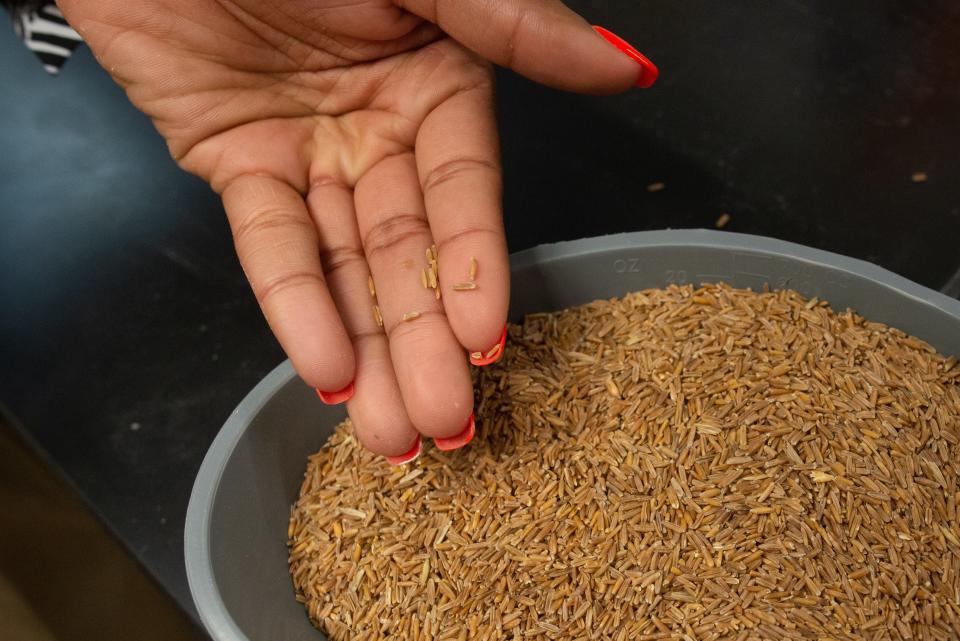
In exchange for their paid research work, the student fellows also become familiar with the various sectors in agriculture, including agriculture business, animal science, grain science and food science.
Since 2006, more than 90 students have participated in the summer research fellowship. Wiley says the partnership is the only one of its kind between an original land-grant university and 1890 Institutions. More than half of the fellows end up attending K-State graduate programs, in part because the university waives the admission fee for those students.
It's part of an effort to get more perspectives and viewpoints into the agriculture industry, which Wiley said is crucial for any initiative to have success.
"Even when we go to Mars, we have to eat, and some food scientist is going to design something, and to do that, we need to get our students to work together to create the various innovative ideas to put in practice," Wiley said.
More: Washburn Regents pick presidential search committee chair, set date to hire interim
Showing students of color agriculture is more than 'cows, plows and sows'
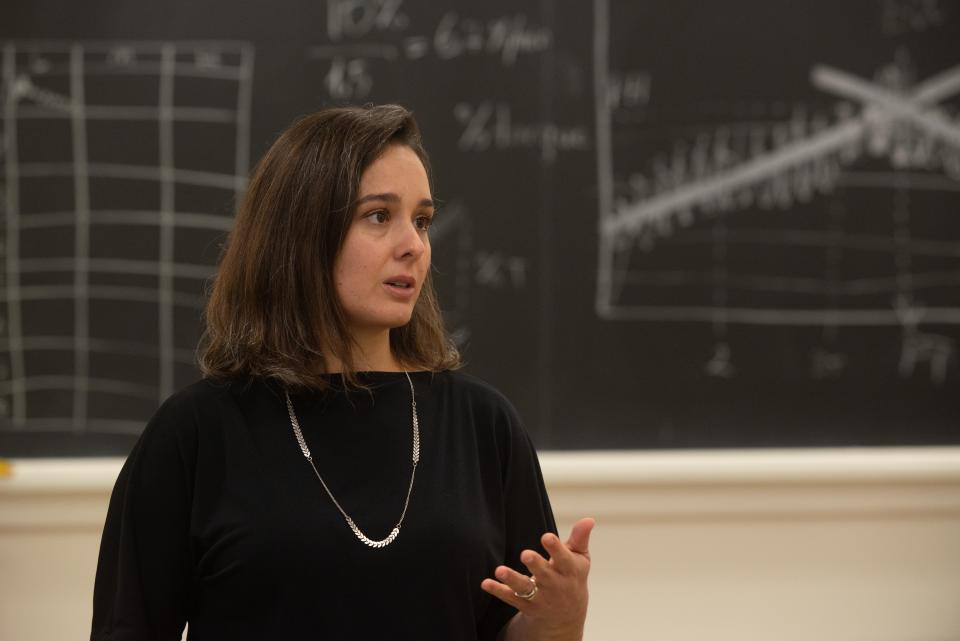
This summer, Adams and her roommate India Myers from Oakwood University in Alabama assisted grain science researchers Elisa Karkle and Kaliramesh Siliveru with their work exploring Kernza's use as a viable grain for commercial-level farming.
The grain, which has been in development for the past few decades, could prove attractive for Kansas farmers, especially if existing equipment and milling techniques for wheat milling transfer to the deep-rooted, perennial grain.
Kernza flour — with a much lower gluten content but still enough to pose a threat for people with celiac disease — wouldn't replace existing flours from wheat and other grains, but it could serve as a component of other baked goods.
That's why the researchers are figuring out how to best mill and implement Kernza flour in baking applications, and it's where Adams and Myers have played a substantial role in daily experimentation this summer.
Adams' work has had her milling Kernza grains to test for density, flow and other flouring qualities, using different types of milling techniques and processes. The resulting flour then goes to Myers, who turns it into a dough that she then measures for its rise and fermentation rate.
"I never thought I’d be doing this kind of research, but it’s been fun," Adams said. "We’re working with grains we don’t really eat as much or know enough about yet. I’ve read more about wheat and sorghum than I have a day in my life, but I’ve learned so much about how flour is made, and everything that goes into it."
As revered as it is in Kansas, agriculture might have a strong, negative connotation for children of color, Wiley said.
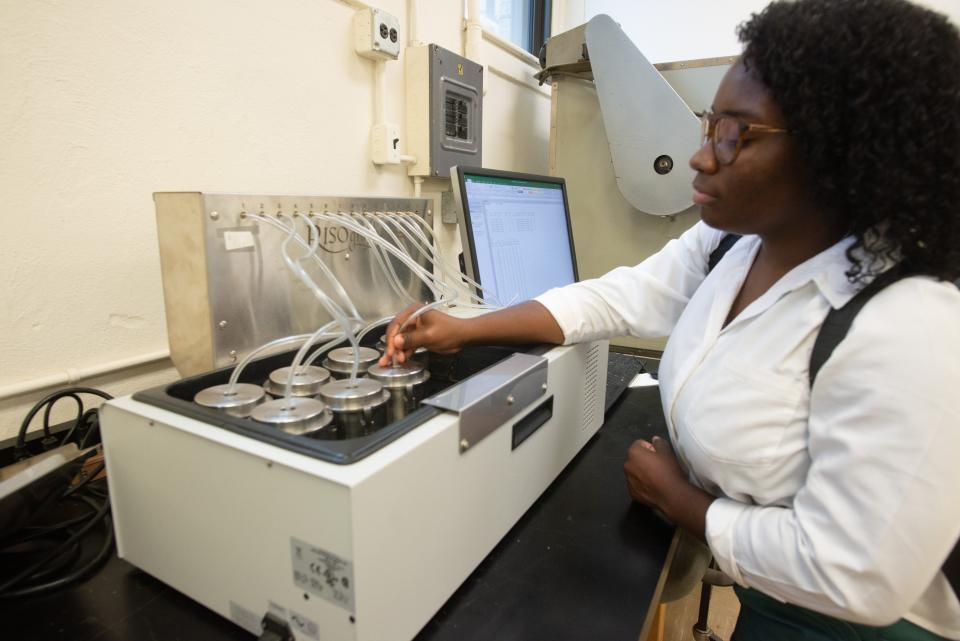
Agriculture, in their communities, is most closely associated with hard, physical labor, particularly for Black families who first think of the industry's historical ties to slavery. Similarly, many Hispanic families in Kansas first think of agriculture through the lens of low-paying jobs in the state's meatpacking plants, Wiley said.
"What we have done in the College of Agriculture is to make sure our students see the wide variety of careers in the industry — not just the cows, plows and sows, which we are very proud of, but the science, business and technology that are agriculture," Wiley said.
For her part, Myers said the summer research fellowship has helped her see a path into a field where she hasn't previously seen many people who look like her.
"It’s about feeling like we belong at certain institutions, especially ones where agriculture is so prevalent," Myers said. "With the group we’ve been with, it’s felt like we could possibly come here and experience what K-State has to offer."
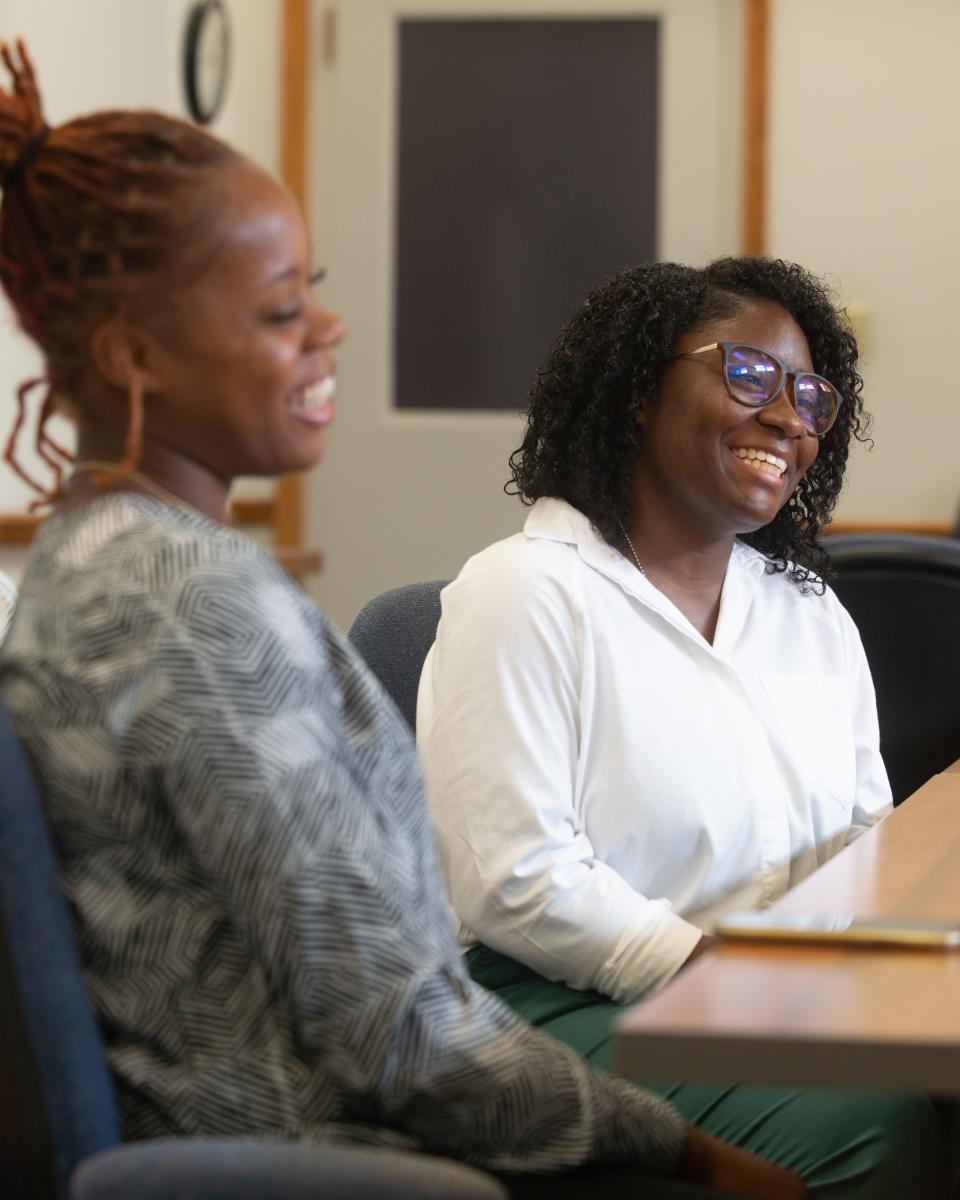
Adams concurred, saying that there's a substantial need to show younger students of color that they, too, can find careers in agriculture.
"But it’s just about getting that out there on TVs and computers, that there are people like us in this field and they’re doing some amazing work," Adams said.
"I gained knowledge, and I gained an interest," she continued. "I’ve always had an open mind to new experiences, and while this isn’t directly tied to what I want to do, I could see how it fits."
Rafael Garcia is an education reporter for the Topeka Capital-Journal. He can be reached at rgarcia@cjonline.com or by phone at 785-289-5325. Follow him on Twitter at @byRafaelGarcia.
This article originally appeared on Topeka Capital-Journal: Fellowships bring Black students to Kansas to research agriculture

